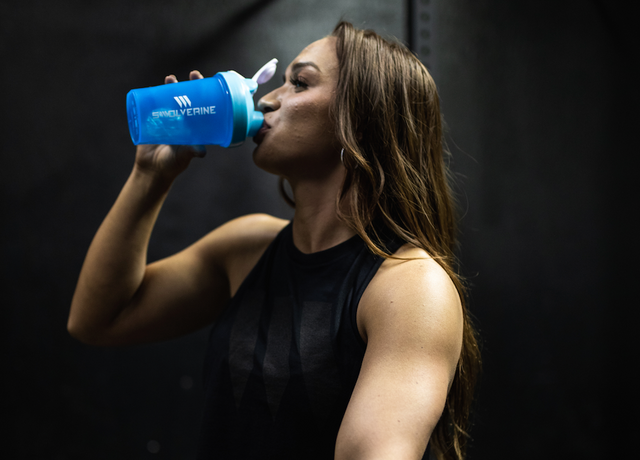Inflammation sits at the center of nearly every performance, recovery, and longevity conversation. From gut health to skin repair to chronic pain, controlling inflammation is often the difference between thriving and breaking down. One research peptide that has earned attention hereå is KPV.
KPV is a short tripeptide fragment derived from the hormone α-MSH (alpha-melanocyte-stimulating hormone). Despite its small size, KPV packs an outsized punch in regulating immune responses and calming inflammation. Unlike many anti-inflammatory drugs that carry significant side effects, KPV works more subtly—guiding the body’s own systems back into balance.
In this guide, we’ll explore what KPV is, how it works, and why it’s being investigated as a tool for gut health, skin repair, and systemic inflammation.
→ Derived from the C-terminal end of α-MSH, giving it potent anti-inflammatory activity.
→ Studied for roles in gut inflammation, wound healing, and skin repair.
→ Explored as a safer alternative to corticosteroids or immunosuppressants in certain models.
KPV isn’t about shutting the immune system off—it’s about teaching it when to calm down, making it one of the most exciting peptides in the inflammation and recovery space.
What Is KPV Peptide?
KPV is a tripeptide composed of just three amino acids: Lysine (K) – Proline (P) – Valine (V). It’s derived from the larger peptide hormone alpha-melanocyte-stimulating hormone (α-MSH), a key regulator in immune and inflammatory responses.
→ Structure: Small, stable, and bioactive. Its simplicity allows it to be delivered in multiple forms, including oral, topical, or injectable research preparations.
→ Classification: Belongs to the family of melanocortin-derived peptides, with activity tied to the melanocortin receptor system (especially MC1R and MC3R), which influences inflammation, pigmentation, and metabolism.
→ Purpose: While α-MSH has wide-ranging effects, the KPV fragment retains strong anti-inflammatory properties without the hormonal baggage of its parent molecule.
Think of KPV as the “business end” of α-MSH—a compact piece carrying the peptide’s inflammation-fighting capability while stripping away functions not needed for therapeutic or research use.
Catania, Anna, et al. "Three‐dimensional structure of the α‐MSH‐derived candidacidal peptide [Ac‐CKPV] 2." The Journal of peptide research 66.1 (2005): 19-26.
How KPV Works (Mechanism of Action)
KPV works by targeting the body’s inflammatory signaling pathways, helping bring an overactive immune response back under control without shutting the system down completely.
→ Melanocortin receptor activity
KPV is thought to act primarily through MC1R and MC3R receptors, which are expressed on immune cells and tissues involved in inflammation. Activation of these receptors reduces the release of pro-inflammatory molecules like TNF-α, IL-1β, and IL-6.
→ NF-κB pathway inhibition
One of KPV’s most studied effects is its ability to block NF-κB activation, a master regulator of inflammation. By calming this pathway, KPV reduces the cascade of inflammatory cytokines that fuel chronic pain, gut inflammation, and tissue breakdown.
→ Barrier protection
In gut models, KPV helps reinforce epithelial barrier integrity, preventing “leaky gut” scenarios where toxins and microbes cross into circulation and drive systemic inflammation.
→ Antimicrobial effects
Research suggests KPV may exert mild antimicrobial actions, further supporting tissue healing by limiting pathogen-driven inflammation.
→ Local vs systemic activity
Because it is such a small peptide, KPV can work locally when applied topically (e.g., on wounds or skin conditions) and systemically when taken orally or injected, making it flexible for different research applications.
In short, KPV doesn’t just suppress inflammation like steroids do—it resets the immune response, allowing healing to take place while still preserving normal defense functions.
Benefits of KPV Peptide
KPV has attracted attention because of its wide-ranging effects on inflammation control, tissue repair, and immune balance. Unlike blunt anti-inflammatories, it works as a regulator—restoring equilibrium without fully suppressing the immune system.
Gut Health & Inflammation
→ Supports intestinal barrier integrity, reducing the risk of “leaky gut.”
→ Calms inflammatory bowel responses, showing potential in research models of colitis and Crohn’s disease.
→ May reduce systemic inflammation linked to poor gut health by preventing bacterial translocation and toxin leakage.
Skin Repair & Wound Healing
→ Accelerates wound closure by reducing local inflammation and supporting tissue remodeling.
→ Studied for use in eczema, psoriasis, and dermatitis, where overactive inflammation drives flare-ups.
→ When applied topically, may help reduce redness, swelling, and irritation while promoting healing.
Systemic Anti-Inflammatory Effects
→ Suppresses inflammatory cytokines (TNF-α, IL-1β, IL-6) across multiple tissues.
→ May support joint health and recovery by reducing inflammatory stress on connective tissues.
→ Considered in research as a safer alternative to corticosteroids, offering inflammation control without immune suppression.
Recovery & Performance
→ By dampening chronic inflammation, KPV may improve recovery speed after training or injury.
→ Reduces oxidative stress load, helping cells maintain energy balance during repair.
→ Supports a healthier inflammatory baseline, which may benefit long-term performance and resilience.
KPV stands out because it can be applied orally, topically, or systemically—making it one of the most versatile research peptides in the inflammation and repair category.
Dosing & Research Protocols (Preclinical/Experimental)
Because KPV is still a research-only peptide, there are no standardized clinical dosing guidelines. What exists comes from preclinical studies and experimental protocols using oral, injectable, or topical delivery.
Oral Administration
→ 10–20 mg daily has been reported in experimental use.
→ Oral delivery is attractive because KPV appears stable in the GI tract, retaining activity in gut tissues.
→ Studied in animal models of colitis and inflammatory bowel disease, where oral dosing reduced inflammatory cytokines and preserved intestinal barrier function.
Injectable Administration (Subcutaneous / Intraperitoneal in Animals)
→ Preclinical studies often use 1–5 mg/kg bodyweight in animal models.
→ In mice with chemically induced colitis, KPV injections significantly reduced inflammation and tissue damage.
→ Human-equivalent doses would be much smaller, but data remain exploratory.
Topical Application
→ 0.1–1% cream or gel formulations have been used experimentally on wounds and inflammatory skin conditions.
→ Topical KPV accelerates wound closure, reduces redness, and lowers inflammatory markers in skin tissues.
→ Beneficial in conditions like eczema, psoriasis, and dermatitis, where local inflammation is a major driver of symptoms.
Key Considerations
→ Route matters: Oral for gut inflammation, topical for skin repair, and injectable for systemic inflammation.
→ Short cycles are common: KPV is usually studied in limited-duration experiments (days to weeks), not chronic daily protocols.
→ Synergy with recovery strategies: Often paired with rest, diet, or other anti-inflammatory supports to maximize results.
Dalmasso, Guillaume, et al. "PepT1-mediated tripeptide KPV uptake reduces intestinal inflammation." Gastroenterology 134.1 (2008): 166-178.
Side Effects and Safety Profile
So far, KPV has shown a very favorable safety profile in both animal models and limited human experimental use. Because it’s a small, naturally occurring tripeptide fragment of α-MSH, it is generally well tolerated and does not appear to cause the systemic complications often associated with stronger immune-suppressing drugs.
General Tolerability
→ Well tolerated orally: Animal studies show stability in the GI tract without toxic effects at typical research doses.
→ Topical safety: Cream and gel applications have not produced significant irritation or adverse local reactions.
→ Injectable use: No major systemic toxicity reported in preclinical studies, even at relatively high mg/kg dosing.
Compared to Steroidal Anti-Inflammatories
→ KPV appears to regulate inflammation without suppressing immune function the way corticosteroids can.
→ This reduces the risk of long-term complications such as adrenal suppression, tissue breakdown, or infection risk.
Reported Mild Effects (Rare)
→ Transient skin irritation at topical application sites (mild redness/itching).
→ Possible mild GI upset with oral use at higher experimental doses.
→ Fatigue or headache has been mentioned anecdotally, though not consistently in studies.
Unknowns and Research Gaps
→ No large-scale human clinical trials exist yet.
→ Long-term safety data is not available—especially for chronic daily use.
→ Pediatric, elderly, and immune-compromised populations have not been systematically studied.
Bottom line: Current evidence suggests KPV is well tolerated with low risk of adverse effects, especially compared to traditional anti-inflammatories. But like all research peptides, its safety in humans remains experimental and not fully established.
Comparison: KPV vs Other Anti-Inflammatory Peptides & Tools
KPV vs BPC-157
→ Focus: KPV is your fire extinguisher—calms inflammation and protects barriers (gut, skin). BPC-157 is your construction crew—rebuilding tissue, tendons, and ligaments.
→ Mechanism: KPV works through melanocortin receptors and NF-κB suppression. BPC-157 leans on angiogenesis and nitric oxide balance to heal and regrow.
→ Best use: KPV when the issue is flare-ups and systemic inflammation; BPC-157 when the priority is structural repair and regeneration.
→ Stack logic: Use KPV to put out the fire, then BPC-157 to rebuild stronger.
KPV vs α-MSH (full-length)
→ Focus: α-MSH does a little bit of everything—appetite, pigmentation, inflammation—but KPV is the streamlined version that keeps only the anti-inflammatory punch.
→ Mechanism: KPV = precision tool; α-MSH = all-in-one, but messy.
→ Takeaway: KPV gives you the clean anti-inflammatory effect without the hormonal baggage.
KPV vs Melanotan II (MT-II)
→ Focus: MT-II is about tan and libido, not inflammation. KPV is gut and skin calm, recovery-first.
→ Mechanism: MT-II hits multiple melanocortin receptors, leading to pigmentation and sexual side effects. KPV is tuned to immune balance only.
→ Takeaway: If the goal is healing and inflammation control, MT-II is a distraction—KPV is the weapon of choice.
KPV vs TB-500 (Thymosin β4 fragment)
→ Focus: TB-500 is a recovery accelerator—drives cell migration and new blood vessel growth. KPV is an inflammation regulator, calming the battlefield so repair can happen.
→ Mechanism: TB-500 reorganizes actin dynamics for repair; KPV suppresses inflammatory cytokines and fortifies tissue barriers.
→ Best use: TB-500 when you need massive repair after injury; KPV when inflammation is the main roadblock. Together, they’re a one-two punch.
KPV vs NSAIDs & Corticosteroids (benchmarks)
→ Focus: NSAIDs and steroids = blunt force. They work fast but tear up the GI tract, kidneys, and long-term immune balance. KPV = precision modulation.
→ Mechanism: NSAIDs block COX enzymes; steroids shut down immune pathways. KPV simply resets the thermostat by dialing down NF-κB and calming immune overdrive.
→ Outcome lens: Where NSAIDs and steroids leave collateral damage, KPV offers targeted relief without the systemic fallout.
Quick Selection Guide
-
Acute gut/skin flare: → KPV
-
Tendon/ligament repair: → BPC-157 (stack with KPV if inflammation is high)
-
Systemic recovery/angiogenesis: → TB-500
-
Cosmetic/sexual research: → MT-II (not an anti-inflammatory)
-
Steroids/NSAIDs not an option: → KPV as a regulatory alternative
Bottom line: KPV isn’t the biggest or flashiest peptide—it’s the regulator that clears the way. Where other compounds rebuild or stimulate, KPV quiets the storm so the body can actually heal.
Legal Status Of KPV Peptide
KPV is currently classified as a research peptide. It is not an FDA- or EMA-approved drug, and it cannot be marketed as a supplement or prescription therapy. Its use is limited to laboratory and experimental research.
→ Not FDA- or EMA-approved
There are no medical indications, approved protocols, or human clinical guidelines for KPV. Any therapeutic use would be considered unregulated and outside standard medical practice.
→ Research-only designation
Suppliers label KPV as “for research use only.” It is sold to academic institutions, laboratories, and research groups, but not intended for human consumption or over-the-counter sale.
→ No clinical guidelines
All available dosing and safety information comes from preclinical animal studies and early experimental reports. There are no official recommendations for duration, cycles, or human dosage.
→ Comparison to other peptides
Like many investigational peptides (e.g., BPC-157, TB-500), KPV exists in a gray area. It shows strong preclinical promise but has not crossed into the realm of approved pharmaceuticals.
In short: KPV is legal to purchase for research purposes, but it is not legally recognized as a drug, supplement, or therapy in mainstream medicine.
Conclusion on KPV Peptide
KPV is one of the simplest peptides in structure, yet one of the most powerful when it comes to controlling inflammation and supporting recovery. As a fragment of α-MSH, it carries forward the anti-inflammatory properties of its parent molecule without the added hormonal effects, making it a clean and targeted regulator.
→ In the gut, KPV helps protect barrier integrity, calm flare-ups, and lower systemic inflammation linked to conditions like colitis.
→ In the skin, topical KPV accelerates wound closure, reduces redness, and supports recovery in inflammatory conditions such as eczema and psoriasis.
→ Systemically, KPV has the potential to replace or complement traditional anti-inflammatories, offering relief without the side effects associated with steroids or NSAIDs.
What makes KPV stand out is its versatility—it can be applied orally, topically, or systemically depending on the target, and across models it consistently shows low toxicity and strong safety margins.
While human research is still limited, early findings suggest that KPV may become an important tool in managing inflammation and improving recovery. It is less about forcefully shutting the immune system down and more about resetting it to balance, creating the conditions where true healing can take place.
FAQ for KPV
What is KPV peptide?
KPV is a short tripeptide (Lysine–Proline–Valine) derived from α-MSH, a hormone involved in immune regulation. It retains the strong anti-inflammatory activity of α-MSH without its broader hormonal effects.
How does KPV work?
KPV reduces inflammation by binding to melanocortin receptors (MC1R and MC3R), blocking the NF-κB pathway, and lowering the release of pro-inflammatory cytokines such as TNF-α and IL-6. It also helps strengthen epithelial barriers in the gut and skin.
What are the benefits of KPV?
Research suggests KPV may:
-
Support gut health and reduce symptoms of colitis and inflammatory bowel conditions.
-
Accelerate wound healing and improve skin repair in eczema, psoriasis, and dermatitis.
-
Lower systemic inflammation without suppressing immune function.
-
Complement recovery from training or injury by calming oxidative and inflammatory stress.
How is KPV administered in research?
KPV has been studied in several forms:
-
Oral: for gut inflammation, stable in the digestive tract.
-
Topical: as creams or gels for skin repair.
-
Injectable: in animal studies for systemic inflammation.
Is KPV safe?
Preclinical studies suggest KPV is well tolerated, with minimal side effects compared to steroids or NSAIDs. Reported issues are mild, such as transient skin irritation or GI upset at higher experimental doses. Long-term human safety data are not yet available.
Is KPV legal?
KPV is not FDA- or EMA-approved. It is sold strictly as a research peptide labeled “for research use only” and is not legally recognized as a supplement or therapy.
How does KPV compare to other peptides?
-
BPC-157: focuses on tissue and tendon repair; KPV is stronger for inflammation control.
-
TB-500: promotes angiogenesis and repair; KPV regulates inflammatory cytokines.
-
α-MSH: broader hormonal effects; KPV is the clean fragment targeting inflammation.







